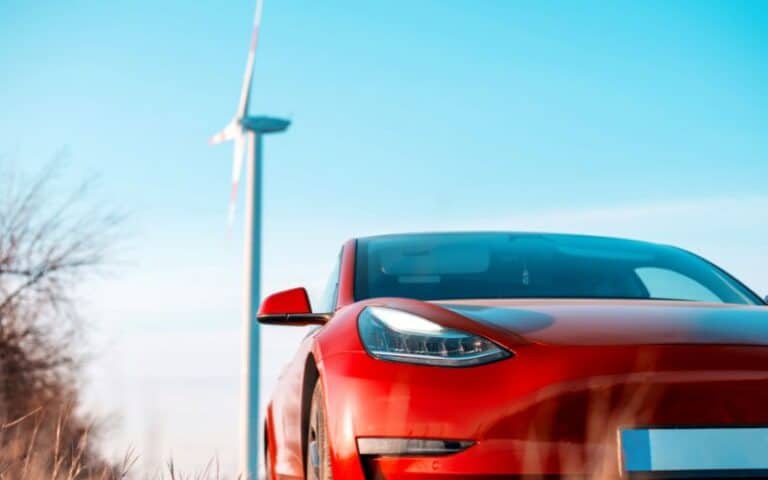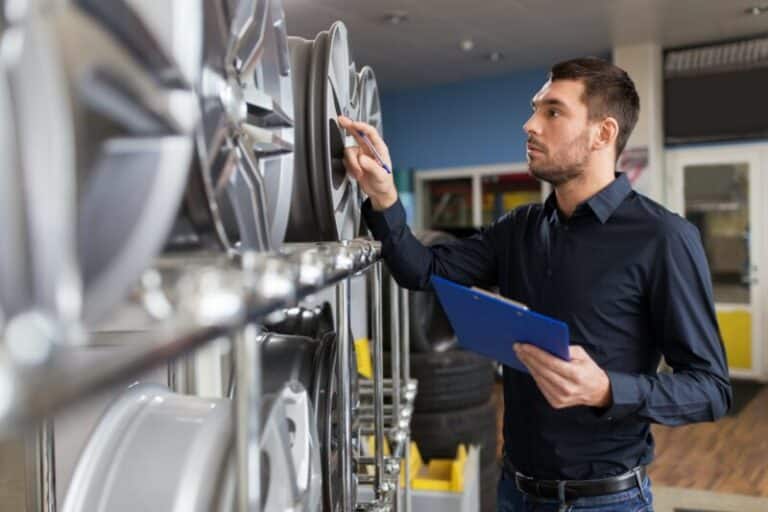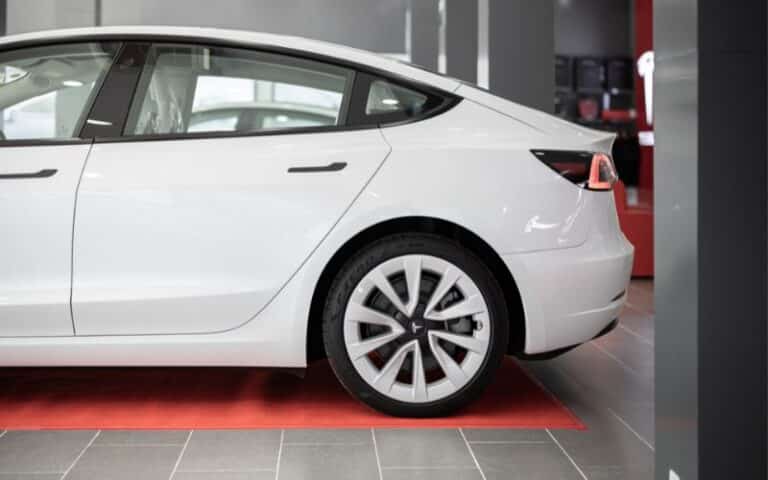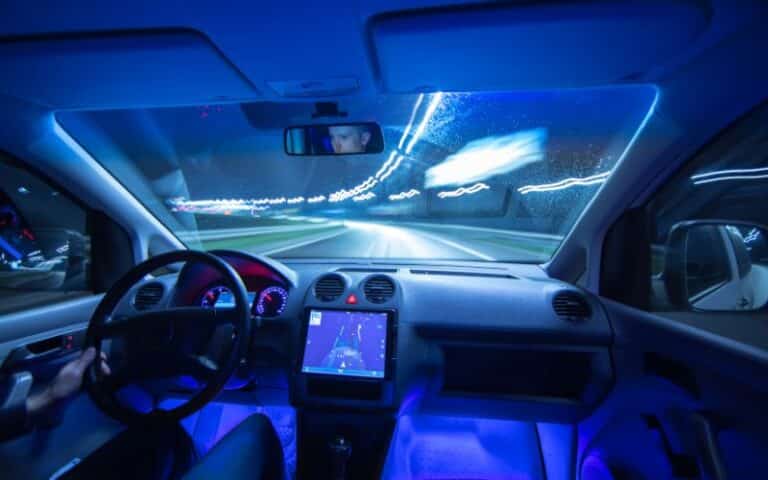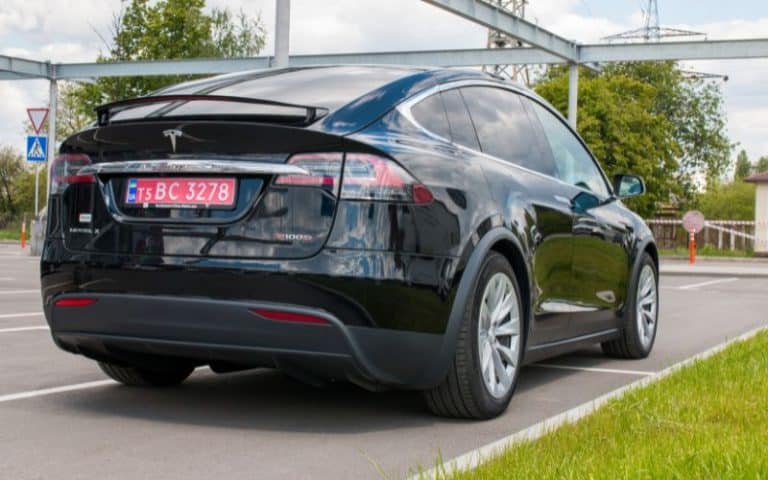Are Tesla Model 3 Wheels Staggered? (Answered)
The Tesla car models have gained popularity as all-electric vehicles known for sleek designs, impressive performance, and advanced technology.
However, this article will focus on the Tesla Model 3. Regarding the Model 3 wheels, a question often arises among Tesla enthusiasts: Are the Tesla Model 3 wheels staggered?
In this article, I will discuss the wheel configuration of the Tesla Model 3 and, of course, whether the Model 3 wheels are staggered.
The Tesla Model 3 has no staggered wheels as a default configuration. The Model 3, however, comes with a symmetrical wheel configuration, in which four wheels are the same width and size. Staggered wheels, on the hand, are wheels with different sizes or widths on the front and rear axles.
By the end, you will understand how the Tesla Model 3 wheel setup works and its effect on driving dynamics.
You will also find out the best-offset option for Model 3 wheels.
Does Tesla Model 3 Have Staggered Wheels?

The Tesla Model 3 does not have staggered wheels. However, the Model 3 has a non-staggered wheel setting as a default wheel configuration.
A staggered wheel is a wheel configuration where the front and the rear wheels have different widths.
The rear wheels are usually wider than the front, which enhances the vehicle’s traction.
On the contrary, the non-staggered wheels have equal widths on all four wheels, providing consistent handling features and simple tire rotation.
However, the specific wheel size and width can vary depending on your Tesla’s trim level and specifications.
Moreover, using non-staggering wheels in your Tesla Model 3 has its benefits. It provides easy and balanced handling, allowing stable and precise control while maneuvering.
In addition, having the same size on all four wheels simplifies tire replacement as you won’t have to dismount and remount different tire sizes.
Regardless, you can upgrade your Model 3 wheels and incorporate aftermarket staggered wheels in your electric vehicle.
This customization option gives your vehicle a more aggressive look and improves performance, but it’s not a Tesla factory configuration.
What Is the Size of Tesla Model 3 Wheels?
The standard wheel size for the Tesla Model 3 is 18 inches in diameter. However, apart from the 18-inch wheel size, other wheel sizes are available for the Model 3 wheels.
These sizes available include the 19-inch and 20-inch wheel sizes. However, the specific wheel size usually varies depending on the Model 3 trim level.
Here are more details on the various available wheel sizes for the Tesla Model 3:
#1. 18-inch Aero Wheels
These are the standard wheel sizes that come with the Tesla Model 3.
The 18-inch aero wheels are lightweight, created by Tesla to match the aerodynamics of the Model 3. It also comes with a removable aerodynamic hubcap.
#2. 19-inch Sport Wheels
The 19-inch sports wheels are available as an optional upgrade. They give the Tesla vehicle a more stylish and sporty appearance, unlike the standard 18-inch wheels.
It also offers a balance between performance and comfort.
#3. 20-inch Performance Wheels
These wheels are much wider than the standard and sports variants of the Tesla Model 3.
However, if you want a performance variant of the Model 3, the 20-inch wheels are just the right choice.
These wheels enhance the electric vehicle’s performance and offer a more aggressive look than the 19-inch wheels.
You should also note that the tire sizes can vary with your wheel size. However, consult your owner’s manual for more information on your tire size specifications.
What Is the Best Offset for Tesla Model 3 Wheels?
The best offset for Tesla Model 3 wheels falls between +35mm to +45mm. Moreover, the offset is the distance between your wheel’s mounting surface and the centerline.
However, you must consider various factors to determine the best offset for your Model 3.
Some of these factors include the offset’s performance, handling, and compatibility with your Model 3 configurations.
Though the best offset varies depending on preference and specific modifications, here are some of the necessary factors to consider:
#1. Performance and Handling
If you prefer a more cornering grip on your Tesla, a lower offset, such as +30mm, will be a good fit for your Model 3.
The lower offset will result in a wider track and give the vehicle a more aggressive appearance while improving stability and overall handling.
However, ensure the offset does not negatively affect the suspension geometry or interfere with other components.
#2. Wheel and Tire Clearance
When selecting a new offset for your Model 3 wheels, it’s necessary to consider the tires and wheel clearance.
Moreover, if there’s insufficient clearance, it could cause rubbing against the fenders or brake calipers.
Therefore, you should leave enough clearance to prevent any damage.
#3. Compatibility
The level of compatibility between the offset and the vehicle’s components also plays an important role in determining the best offset for your Model 3.
However, choosing an offset within the Tesla recommended range ensures compatibility with your Model 3’s suspension and brake system.
#4. Aesthetics
Maintaining the appearance of your Tesla Model 3 is also a necessity.
Moreover, you don’t want to lose the aesthetics that comes with your electric vehicle while customizing your offset.
However, a lower offset offers a wider, flush look, while a higher offset creates a more conservative appearance.
#5. Professional Advice
Before deciding the best offset for your Tesla Model 3, it is advisable to seek recommendations from wheel professionals.
You can also consult Tesla enthusiasts who have modified their Model 3 wheels for insightful firsthand guidance and knowledge of compatible offsets.
Are Tesla Staggered Wheels More Expensive?
Yes, Tesla staggered wheels are more expensive than the non-staggered wheel setup.
Increasing width and customization in producing staggered wheels results in high production costs.
Therefore, the increase in cost leads to a higher price tag, unlike the non-staggered wheel configurations.
Additionally, due to its limited availability, you might have to spend more to acquire the specific tires you require for the rear wheels.
Furthermore, staggered wheels require more care and attention, which increases maintenance costs over time.
But if the cost is within your budget, you can incorporate the wheels in your Tesla vehicle.
The table below shows the comparison between staggered and non-staggered wheels for Tesla Model 3
| Consideration | Staggered Wheels | Non-Staggered Wheels |
|---|---|---|
| Aesthetic Appeal | Sportier and more aggressive look | Uniform appearance |
| Traction and Handling | Improved cornering and traction | Balanced traction and handling |
| Cost | Higher cost | Potentially lower cost |
| Tire Rotation | Limited rotation options | More flexible rotation possibilities |
Using staggered wheels in Tesla vehicles is common among Tesla enthusiasts and drivers seeking improved performance.
However, it is important to consider the possible cost implications associated with purchasing staggered wheels.
Here are some of the cost implications:
#1. Wheel Cost
Unlike the standard wheel configurations, the cost of staggered wheels can be higher.
Since the wheels on the rear axle are wider, they tend to be more expensive due to their large size and extra material.
Upgrading with aftermarket staggered wheels can increase costs depending on the brand and material.
#2. Tire Cost
Since staggered wheels usually require different tire sizes for the front and rear axles, you would have to purchase two tire sets with different sizes.
Moreover, wider rear tires cost more than narrower front tires due to the design and additional materials.
#3. Wear and Replacement
Due to the difference in size, staggered wheels may experience uneven tire wear, unlike the standard wheel setup.
The wider pair of wheels covers more load and traction, leading to faster tire wear and tear.
Consequently, you might need to replace the rear tires more frequently, which increases the cost of ownership in the long run.
#4. Limited Tire Options
Staggered wheel configurations can also limit your tire options.
Since the front and rear tires have varying sizes, it might be more difficult to find a variety of tire choices in the specific size you require.
This limitation can also affect pricing and the ability to select the exact tire design, brand, and size you prefer.
#5. Increased Maintenance
The rotating tires become more complex since the front and rear tires are of different sizes.
Due to this complexity, maintaining a staggered wheel setup might require extra care and attention.
This additional care will involve relying on constant tire inspections, alignments, and rotation balancing to ensure even and optimal performance.
However, this additional attention will increase maintenance costs with time.
Though staggered wheels offer enhanced performance, improved cornering and traction, and an aesthetically appealing look, they are often more expensive.
Therefore, you should consider your budget, priorities, and desired performance benefits before purchasing staggered wheels on your Tesla Model 3.

